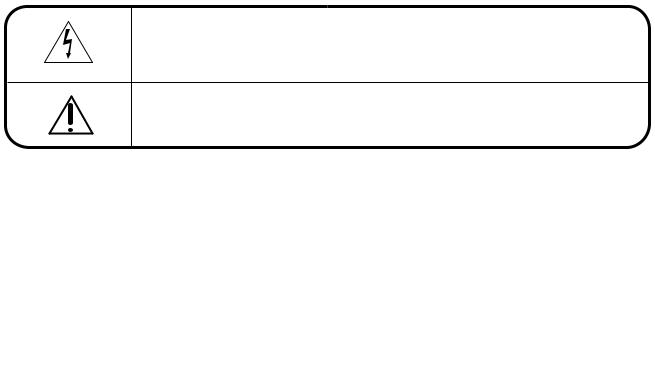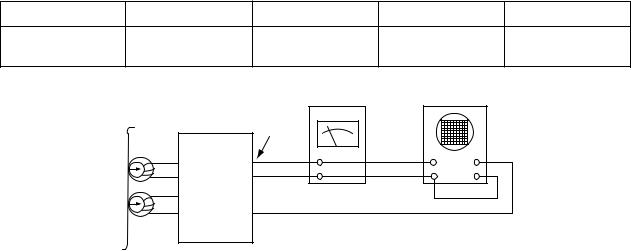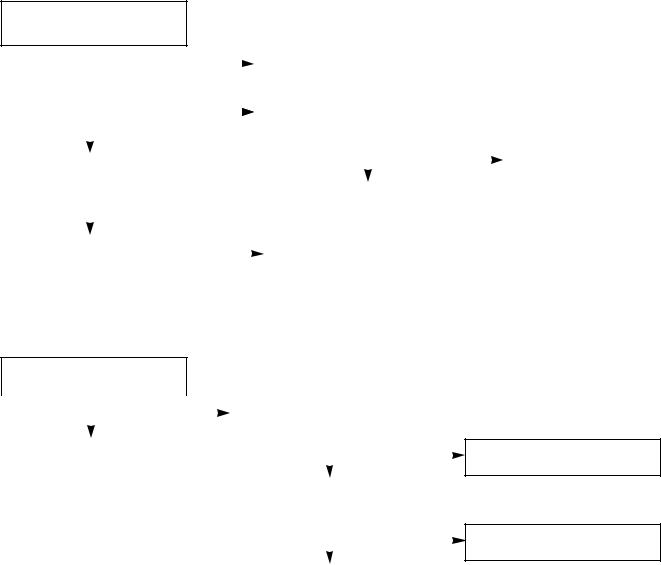LG FFH-M217X, FE-M217E Schematic

M217-FE M217E-FFH MODELX , MANUA: SERVICL E
MP3 CD
MICRO SYSTEM
SERVICE MANUAL
CAUTION
BEFORE SERVICING THE UNIT, READ THE “SUMMARY” IN THIS MANUAL.
MODEL: FFH-M217X, FE-M217E

[CONTENTS]
SECTION 1. GENERAL
• SERVICING PRECAUTIONS |
..................................................................................................... |
1-2 |
||
|
||||
• ESD PRECAUTIONS |
................................................................................................................. |
1-4 |
||
|
|
|||
• SPECIFICATION |
........................................................................................................................ |
1-5 |
||
|
|
|
||
SECTION 2. ELECTRICAL SECTION
• ADJUSTMENTS |
......................................................................................................................... |
2-1 |
||
|
|
|
||
• TROUBLESHOOTING ............................................................................................................... |
|
2-2 |
||
• WAVEFORMS OF MAJOR CHECK POINT............................................................................. |
2-18 |
|||
• INTERNAL BLOCK DIAGRAM OF ICs .................................................................................... |
2-20 |
|||
• BLOCK DIAGRAM |
.................................................................................................................... |
2-25 |
||
|
|
|||
• SCHEMATIC DIAGRAMS |
........................................................................................................ |
2-27 |
||
|
||||
• WIREING DIAGRAM ................................................................................................................ |
|
2-29 |
||
• PRINTED CIRCUIT DIAGRAMS .............................................................................................. |
2-33 |
|||
SECTION 3. EXPLODED VIEWS
• CABINET AND MAIN FRAME SECTION |
.................................................................................. |
3-1 |
||
|
|
|||
• TAPE DECK MECHANISM: SINGLE AUTO REVERSE DECK |
................................................. |
3-3 |
||
|
||||
• OPTION PICK-UP CARRIAGE |
................................................................................................... |
3-5 |
||
|
|
|
||
SECTION 4. SPEAKER PART
• SPEAKER PART |
........................................................................................................................ |
4-1 |
|
SECTION 5. REPLACEMENT PARTS LIST
• REPLACEMENT PARTS LIST |
.................................................................................................... |
5-1 |
|
- 1-1 -

SECTION 1. GENERAL
SERVICING PRECAUTIONS
NOTES REGARDING HANDLING OF THE PICK-UP
1.Notes for transport and storage
1)The pick-up should always be left in its conductive bag until immediately prior to use.
2)The pick-up should never be subjected to external pressure or impact.
Storage in conductive bag |
Drop impact |
2.Repair notes
1)The pick-up incorporates a strong magnet, and so should never be brought close to magnetic materials.
2)The pick-up should always be handled correctly and carefully, taking care to avoid external pressure and impact. If it is subjected to strong pressure or impact, the result may be an operational malfunction and/or damage to the printed-circuit board.
3)Each and every pick-up is already individually adjusted to a high degree of precision, and for that reason the adjustment point and installation screws should absolutely never be touched.
4)Laser beams may damage the eyes!
Absolutely never permit laser beams to enter the eyes!
Also NEVER switch ON the power to the laser output part (lens, etc.) of the pick-up if it is damaged.
NEVER look directly at the laser beam, and don’t let contact fingers or other exposed skin.
5)Cleaning the lens surface
If there is dust on the lens surface, the dust should be cleaned away by using an air bush (such as used for camera lens). The lens is held by a delicate spring. When cleaning the lens surface, therefore, a cotton swab should be used, taking care not to distort this.
Pressure
Magnet
Pressure
How to hold the pick-up |
Cotton swab
Conductive Sheet
6)Never attempt to disassemble the pick-up.
Spring by excess pressure. If the lens is extremely dirty, apply isopropyl alcohol to the cotton swab. (Do not use any other liquid cleaners, because they will damage the lens.) Take care not to use too much of this alcohol on the swab, and do not allow the alcohol to get inside the pick-up.
-1-2 -

NOTES REGARDING COMPACT DISC PLAYER REPAIRS
1.Preparations
1)Compact disc players incorporate a great many ICs as well as the pick-up (laser diode). These components are sensitive to, and easily affected by, static electricity. If such static electricity is high voltage, components can be damaged, and for that reason components should be handled with care.
2)The pick-up is composed of many optical components and other high-precision components. Care must be taken, therefore, to avoid repair or storage where the temperature of humidity is high, where strong magnetism is present, or where there is excessive dust.
2.Notes for repair
1)Before replacing a component part, first disconnect the power supply lead wire from the unit
2)All equipment, measuring instruments and tools must be grounded.
3)The workbench should be covered with a conductive sheet and grounded.
When removing the laser pick-up from its conductive bag, do not place the pick-up on the bag. (This is because there is the possibility of damage by static electricity.)
4)To prevent AC leakage, the metal part of the soldering iron should be grounded.
5)Workers should be grounded by an armband (1MΩ)
6)Care should be taken not to permit the laser pick-up to come in contact with clothing, in order to prevent static electricity changes in the clothing to escape from the armband.
7)The laser beam from the pick-up should NEVER be directly facing the eyes or bare skin.
Armband
Resistor
(1 Mohm)
Resistor |
Conductive |
|
(1 Mohm) |
||
Sheet |
||
|
CLEARING MALFUNCTION
You can reset your unit to initial status if malfunction occur(button malfunction, display, etc.).
Using a pointed good conductor(such as driver), simply short the RESET jump wire on the inside of the volume knob for more than 3 seconds.
If you reset your unit, you must reenter all its settings(stations, clock, timer)
NOTE: 1. To operate the RESET jump wire, pull the volume rotary knob and release it.
2. If you wish to operate the RESET jump wire, it is necessary to unplug the power cord.
|
VOLUME |
|
UP |
VOLUME KNOB |
RESET jump wire |
|
|
|
RESET |
DOWN
- 1-3 -

ESD PRECAUTIONS
Electrostatically Sensitive Devices (ESD)
Some semiconductor (solid state) devices can be damaged easily by static electricity. Such components commonly are called Electrostatically Sensitive Devices (ESD). Examples of typical ESD devices are integrated circuits and some field-effect transistors and semiconductor chip components. The following techniques should be used to help reduce the incidence of component damage caused by static electricity.
1.Immediately before handling any semiconductor component or semiconductor-equipped assembly, drain off any electrostatic charge on your body by touching a known earth ground. Alternatively, obtain and wear a commercially available discharging wrist strap device, which should be removed for potential shock reasons prior to applying power to the unit under test.
2.After removing an electrical assembly equipped with ESD devices, place the assembly on a conductive surface such as aluminum foil, to prevent electrostatic charge buildup or exposure of the assembly.
3.Use only a grounded-tip soldering iron to solder or unsolder ESD devices.
4.Use only an anti-static solder removal device. Some solder removal devices not classified as "anti-static" can generate electrical charges sufficient to damage ESD devices.
5.Do not use freon-propelled chemicals. These can generate electrical charges sufficient to damage ESD devices.
6.Do not remove a replacement ESD device from its protective package until immediately before you are ready to install it. (Most replacement ESD devices are packaged with leads electrically shorted together by conductive foam, aluminum foil or comparable conductive materials).
7.Immediately before removing the protective material from the leads of a replacement ESD device, touch the protective material to the chassis or circuit assembly into which the device will by installed.
CAUTION : BE SURE NO POWER IS APPLIED TO THE CHASSIS OR CIRCUIT, AND OBSERVE ALL OTHER SAFETY PRECAUTIONS.
8.Minimize bodily motions when handing unpackaged replacement ESD devices. (Otherwise harmless motion such as the brushing together of your clothes fabric or the lifting of your foot from a carpeted floor can generate static electricity sufficient to damage an ESD device).
[CAUTION. GRAPHIC SYMBOLS]
THE LIGHTNING FLASH WITH APROWHEAD SYMBOL. WITHIN AN EQUILATERAL
TRIANGLE, IS INTENDED TO ALERT THE SERVICE PERSONNEL TO THE PRESENCE
OF UNINSULATED “DANGEROUS VOLTAGE” THAT MAY BE OF SUFFICIENT
MAGNITUDE TO CONSTITUTE A RISK OF ELECTRIC SHOCK.
THE EXCLAMATION POINT WITHIN AN EQUILATERAL TRIANGLE IS INTENDED TO
ALERT THE SERVICE PERSONNEL TO THE PRESENCE OF IMPORTANT SAFETY
INFORMATION IN SERVICE LITERATURE.
- 1-4 -

SPECIFICATIONS
|
General |
Power supply |
Refer to the back panel of the unit |
|
|
|
|
|
|
|
|
Power consumption |
50W |
|
|
|
|
|
|
|
|
Mass |
4.2kg |
|
|
|
|
|
|
|
|
Extemal dimensions(W X H X D) |
161 X 249 X 275mm |
|
|
|
|
|
|
|
CD |
Frequency Response |
40 -18000Hz |
|
|
|
|
|
|
|
|
Signal-to-noise ratio |
70dB |
|
|
|
|
|
|
|
|
Dynamic range |
70dB |
|
|
|
|
|
|
|
|
Tuning Range |
87.5 -108.0MHz or 65 ~ 74MHz, 87.5 ~108.0 MHz |
|
|
|
|
|
|
|
|
Intermediate Frequency |
10.7 MHz |
|
|
FM |
|
|
|
TUNER |
Signal-to-noise ratio |
60/55 dB |
||
|
|
|
||
Frequency Response |
60 -10000Hz |
|||
|
|
|||
|
|
|
|
|
|
|
Tuning Range |
522-1620kHz or 520-1720kHz |
|
|
AM |
|
|
|
|
Intermediate Frequency |
450kHz |
||
|
|
|
|
|
|
|
Signal-to-noise ratio |
35 dB |
|
|
|
|
|
|
|
|
Frequency Response |
100 -1800 Hz |
|
|
|
|
|
|
|
AMP |
Output Power |
20W + 20W |
|
|
|
|
|
|
|
|
T.H.D |
0.2% |
|
|
|
|
|
|
|
|
Frequency Response |
40-25000Hz |
|
|
|
|
|
|
|
|
Signal-to-noise ratio |
80dB |
|
|
|
|
|
|
|
TAPE |
Tape Speed |
3000 ± 3% (MTT-111, NORMAL-SPEED) |
|
|
|
|
|
|
|
|
Wow Flutter |
0.25% (MTT-111,JIS-WTD) |
|
|
|
|
|
|
|
|
F.F/REW Time |
120sec(C-60) |
|
|
|
|
|
|
|
|
Frequency Response |
250-8000Hz |
|
|
|
|
|
|
|
|
Signal-to-noise ratio |
43dB(P/B)/43dB(R/P) |
|
|
|
|
|
|
|
|
Channel Separation |
50dB(P/B)/45dB(R/P) |
|
|
|
|
|
|
|
|
Erase Ratio |
55dB (MTT-5511) |
|
|
|
|
|
|
|
Speaker |
Type |
2 Way 2 Speaker |
|
|
|
|
|
|
|
|
Impedance |
6Ω |
|
|
|
|
|
|
|
|
Frequency Response |
85-20000Hz |
|
|
|
|
|
|
|
|
Sound Pressure Level |
88dB/W(1m) |
|
|
|
|
|
|
|
|
Rated Input Power |
20W |
|
|
|
|
|
|
|
|
Max.Input Power |
40W |
|
|
|
|
|
|
|
|
Net Dimension(W X H X D) |
153 X 240 X 220mm |
|
|
|
|
|
|
|
|
Net Weight(1EA) |
2.24kg |
|
|
|
|
|
NOTE : Specification are subject to change without notice in the course of product improvement.
- 1-5 -

- 1-6 -

SECTION 2. ELECTRICAL SECTION
ADJUSTMENTS
This set has been aligned at the factory and normally will not require further adjustment. As a result, it is not recommended that any attempt is made to modificate any circuit. If any parts are replaced or if anyone tampers with the adjustment, realignment may be necessary.
IMPORTANT
1.Check Power-source voltage.
2.Set the function switch to band being aligned.
3.Turn volume control to minimum unless otherwise noted.
4.Connect low side of signal source and output indicator to chassis ground unless otherwise specified.
5.Keep the signal input as low as possible to avoid AGC and AC action.
TAPE DECK ADJUSTMENT
1. AZIMUTH ADJUSTMENT
Deck Mode |
|
Test Tape |
Test Point |
Adjustment |
Adjust for |
Palyback |
|
MTT-114 |
Speaker Out |
DECK Screw |
Maximum |
|
Azimuth Screw |
||||
|
|
|
|
|
|
|
|
|
Electronic |
Dual-trace |
|
|
|
|
Voltmeter |
synchroscope |
|
|
Head |
Playback Mode Speaker Out |
|
|
|
|
|
|
|
||
|
L ch |
|
L out |
CH1 CH2 |
|
|
|
|
|
||
|
|
|
|
|
|
Test Tape |
Unit |
|
|
|
|
MTT-114 |
R ch |
|
GND |
|
|
|
|
|
|||
|
|
|
|
||
|
|
|
R out |
|
|
Figure 1. Azimuth Adjustment Connection Diagram
- 2-1 -

TROUBLESHOOTING
• AUDIO PART
P-SENS PART
Does +5V appear at ZD901?
|
|
NO |
Check the waveform |
|
||||
YES |
|
|
||||||
|
|
of D937 (+). |
|
|
||||
|
|
|
|
|
||||
|
|
|
|
|
|
|
|
|
|
|
|
|
YES |
|
NO |
|
|
Check the pattern of |
|
|
|
|
|
|
|
|
|
|
|
|
|
|
|
||
|
|
|
|
|
|
|
||
IC301 pin 26 . |
|
|
Replace ZD901. |
|
|
|||
|
|
|
|
|
|
|
|
|
VKK PART
Does DC - 33V appear at
PN301 pin 19 .
NO
Check the DC -35V of C928(-)
YES
NO
YES
Check the DC -33V of
ZD 902(-)
Check the pattern of FRONT |
|
|
NO |
YES |
|
||
|
|
||
PCB ASS’Y |
|
||
|
|
|
|
Check the DC -33V of
Q901 “E”
NO
YES
Check the PATTERN
Replace the D937
Replace the D936
Replace the ZD902
Replace the Q901
- 2-2 -

POWER CIRCUIT
Check the Fuse |
|
|
|
|
|
NO |
|
YES |
|
||
|
|
|
|
|
|
|
|
|
|
NO |
|
|
|
||
Check the DC output |
|||
of C921(+) |
|
|
|
|
|
|
|
YES |
|
|
|
|
|
|
|
Check the DC 12V
Output of IC901
YES
NO
Check the DC 6.2V
output of IC902
YES |
|
NO |
|
|
|
Check the DC 12V
Output of IC903
NO
YES
Check the 5.6V of Q604 “C”
(CD FUNCTION)
YES |
|
NO |
|
|
|
END
Replace the Fuse
CHECK THE AC VOLTAGE OF CN901 pin1, 4
YES 
Replace the D921, D922,
D923, D924
Replace the IC902
Check DC VOLTAGE OF
D930(+)
YES
Replace the IC902
Check the “High” of
IC903 pin4
YES
Replace the IC903
Check the “High” of Q605“B”
YES
Replace the Q604
NO
Replace the Transformer
NO
Replace the D930
NO |
Check the "High" of |
|
PN601 pin5 |
|
|
NO |
Check the “High” of |
|
IC601 pin12 |
|
|
- 2-3 -

MUTING CIRCUIT (MUTE)
Dose “High” appear at
Q701, Q751“B”
|
|
|
|
NO |
|
Check the “High” of PN601 pin4 |
|
|
|
||||||
|
|
|
|
|
|
|
|
||||||||
|
YES |
|
|
|
|
|
|
|
|
|
|||||
|
|
NO |
|
|
|
|
|||||||||
|
|
|
|
|
|
|
|
|
|
||||||
|
|
|
|
|
|
|
|
|
|||||||
|
|
|
|
|
Check the “High” of |
|
|
|
|
|
|||||
|
|
|
|
|
|
|
|
|
|
|
|
|
|
||
|
|
|
|
|
|
|
|
|
the IC301 pin12 |
|
|
|
|
|
|
|
|
|
|
|
|
|
|
|
|
|
|
|
|
|
|
|
|
|
|
|
|
|
|
|
YES |
|
NO |
|
|
|
|
|
|
|
|
|
|
|
|
|
|
|
|
Refer to IC 301 |
|||
|
check the “Low” of Q701, |
|
|
|
|
|
|
|
|
|
|
|
Troubleshooting |
||
|
|
|
|
|
|
|
|
|
|
|
|
||||
|
Q751, “C” |
|
|
|
|
|
|
|
|
|
|
|
|
||
|
|
|
|
|
|
Replace the Q703 |
|
|
|
|
|
||||
|
|
|
|
|
|
|
|
|
|
|
|
|
|
||
|
YES |
|
|
|
|
|
|
|
|
|
|
|
|
|
|
|
|
|
|
|
|
|
|
|
|
|
|
|
|||
|
|
|
|
|
|
|
|
|
|
|
|
|
|
|
|
|
|
|
|
|
|
|
|
|
|
|
|
|
|
|
|
|
MUTE |
|
|
|
|
|
|
|
|
|
|
|
|
||
|
|
|
|
|
|
Replace the TR |
|
|
|
|
|
||||
|
|
|
|
|
|
|
|
|
|
|
|||||
|
|
|
|
|
|
|
|
|
|
|
|
|
|
|
|
|
|
|
|
|
|
|
|
|
|
|
|
|
|
|
|
AUDIO ABNORMAL
Check the signal output of
IC701 pin2, 4
|
|
NO |
|
|
|
|
YES |
|
Check the signal input of IC701 |
|
|||
|
|
pin7, 11 |
|
|||
|
|
|
|
|
||
|
|
|
|
|
|
|
|
|
|
|
|
NO |
|
Check the connecting to |
|
|
YES |
|
||
|
|
|
|
|||
SPEAKER |
|
|
|
|
||
|
|
|
|
|
||
|
|
|
|
|
|
|
|
|
|
|
|
|
|
|
|
|
|
Check the “High” of |
|
|
|
|
|
|
IC701 pin5 |
|
|
|
|
|
|
|
|
|
|
|
|
|
YES |
NO |
|
|
|
|
|
|
|
|
|
|
|
|
|
|
|
|
|
|
|
|
|
|
|
|
|
|
Check the power of IC701 |
|
|
|
|
|
|
|
|
|
Check the DC +9V of IC601
pin1
Check the “High” of Q702 “B”
- 2-4 -

FUNCTION MODE AUDIO ABNORMAL
TAPE
Check the signal input of IC601 pin6, 23
Refer to “IC201 Troubleshooting”
AUX
Chekc the signal input of IC601, pin5, 24
Check the signal input of JK601
CD
Check the signal input of IC601 pin3, 26
Check the signal input of PN603 pin6, 8
TUNER
Check the signal input of IC601 pin4, 25
Refer to “TUNER PACK Troubleshooting”
- 2-5 -

IC301 TROUBLESHOOTING
Check the power supplying IC301 pin31,32,51,88?
NO
YES
Check the P-SENS “High” of IC301 pin6
NO
YES
Check the oscillation of X301
NO
YES
When power supplying to IC301 pin92. (Low High)
NO
YES
Replace the IC301
Refer to “Power Circuit Troubleshooting”
Check the P-SENS
Replace the X301
Check the RESET circuit
IC601 TROUBLESHOOTING
Check the power supplying to IC601 pin1
NO
YES
Check the CLK Data of IC601 pin14, 15
Refer to “Power Circuit Troubleshooting”
|
|
|
NO |
|
|
|
|
|
|
|
|
|
|
|
|
|
|
|
|
|
|
|
|
Check the Data of IC301 pin14, 15 |
|
||||||||
YES |
|
|
|
|
|
|
|
|
(CD TAPE FUNCTION) |
|
||||||
|
|
|
|
|
|
|
|
|
|
|
|
|
|
|
|
|
Check the IC601 FUNCTION SELECTOR |
|
|
|
|
|
|
|
|
|
|
Refer to “IC301 |
|||||
|
|
|
|
|
|
|
|
|
|
|||||||
|
|
|
|
|
|
|
|
|
|
|
|
|
|
|
Troubleshooting” |
|
|
|
NO |
|
|
|
|
|
|
|
|
|
|
|
|||
|
|
|
Replace the |
|
|
Check the pattern |
|
|
|
|
||||||
|
|
|
|
|
|
|||||||||||
|
|
|
|
|
|
|
|
|
|
|
||||||
YES |
|
|
|
|
IC601 |
|
|
|
|
|
|
|||||
|
|
|
|
|
|
|
|
|
|
|
||||||
|
|
|
|
|
|
|
|
|
|
|
|
|
|
|
|
|
END
- 2-6 -
